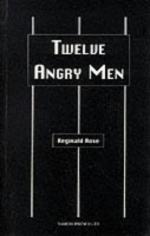
|
| Name: _________________________ | Period: ___________________ |
This test consists of 15 multiple choice questions and 5 short answer questions.
Multiple Choice Questions
1. What is "the burden of proof"?
(a) The principle stating the defendant does not have to prove anything but the prosecution must prove guilt.
(b) The responsibility of the jury to come up with the right verdict.
(c) The responsibility of the judge in proving guilt or innocence.
(d) The responsibility of proving one's innocence.
2. What two types of prejudice are evident in the comments of some of the jurors during Act 1?
(a) Prejudice against foreigners and class prejudice.
(b) Color prejudice and racial prejudice.
(c) Prejudice against some ethnic groups and prejudice against people from certain areas.
(d) Prejudice against the poor and prejudice against the uneducated.
3. According to the discussion, what kind of relationship exists between the victim and the defendant?
(a) A relationship of bitterness and resentment.
(b) A distant relationship with little communication.
(c) A good relationship even though there are occasional quarrels.
(d) A violent relationship with frequent fights.
4. What is the reaction of the jury when the dissenting juror discredits the allegation that the weapon is unique?
(a) They claim he is a criminal just like the defendant.
(b) They begin to fight him.
(c) They are astonished and one says that it is illegal to purchase such things.
(d) They are enlightened.
5. What important facts are revealed about the circumstances of the defendant's life by the juror who votes "not guilty" in the first round of voting?
(a) He has had a difficult life in a ghetto without a father.
(b) He has had a difficult life in a ghetto; his mother is dead and his father has beaten him regularly.
(c) He is an orphan and member of a minority group.
(d) He has been in and out of prison for stealing cars.
6. Why does the dissenting juror insist they should spend time examining the evidence in detail?
(a) He believes the witnesses are unreliable.
(b) He believes that the defendant is innocent.
(c) He believes the presentation of the case is prejudiced.
(d) He is not certain that the defendant is guilty.
7. How does the dissenting juror explain the defendant's record of violence?
(a) He says the defendant has been wayward because of bad company.
(b) He says the defendant has an abusive father who has beaten him since he was a young boy.
(c) He says the defendant was left by his mother as a child.
(d) He says the defendant has been conditioned this way by living in the ghetto.
8. After the knife discussion, how do the other jurors pressure the dissenting juror to make him change his vote?
(a) They suggest that he is on the side of law breakers.
(b) They suggest that he is not intelligent enough to understand the evidence.
(c) They say he is the only one and they will return a "hung jury" verdict.
(d) They suggest that he is inferior because he is from the ghetto.
9. At what time is the murder alleged to have occurred?
(a) Around midday.
(b) Early in the morning.
(c) In the afternoon.
(d) Just after midnight.
10. What sentence must the defendant face if proven guilty?
(a) At least thirty years imprisonment.
(b) Life imprisonment without possibility of parole.
(c) Life imprisonment with the possibility of parole.
(d) The death penalty.
11. Which juror asks the guard to bring in the murder weapon for closer examination?
(a) Juror Eight.
(b) The foreman.
(c) Juror Nine.
(d) Juror Three.
12. What is the state of mind of most of jurors as they enter the jury room?
(a) Tired, but committed to spending whatever time it takes to analyze the evidence.
(b) Tired, uncomfortable and eager to return with a guilty verdict.
(c) Eager to return a just verdict even though they are uncomfortable.
(d) Willing to do whatever is necessary to reach the right verdict.
13. Apart from the action of the dissenting juror in Act 1, what other contributions from a juror suggest there is at least one other juror willing to stand up against the behavior of others?
(a) Juror One says people are free to disagree.
(b) The foreman orders the jurors to be orderly.
(c) Juror Six says America is a free country.
(d) A juror rebukes Juror Ten for his racist comment.
14. What information does Juror Seven provide about the history of the defendant?
(a) He has been charged with murder before.
(b) He has been convicted of stealing cars.
(c) He has been to prison before.
(d) He has stolen a car, been convicted of mugging and stabbed someone in the arm.
15. Who jams the murder weapon into the wall?
(a) Juror four.
(b) The foreman.
(c) Juror Nine.
(d) Juror Eight.
Short Answer Questions
1. Where does the old man who testifies for the prosecution live?
2. In the beginning of the deliberations, how do most of the jurors demonstrate a lack of seriousness about their role as jurors?
3. Which of the jurors comment that they all had difficult lives, so a difficult life should not explain the defendant's history of violence?
4. Why does the dissenting juror challenge the fact that other jurors are willing to take the alleged eyewitness' word when they would not accept the defendant's word?
5. What important information casts doubts on the eyewitness' story in the first discussion of the evidence?
|
This section contains 970 words (approx. 4 pages at 300 words per page) |

|




